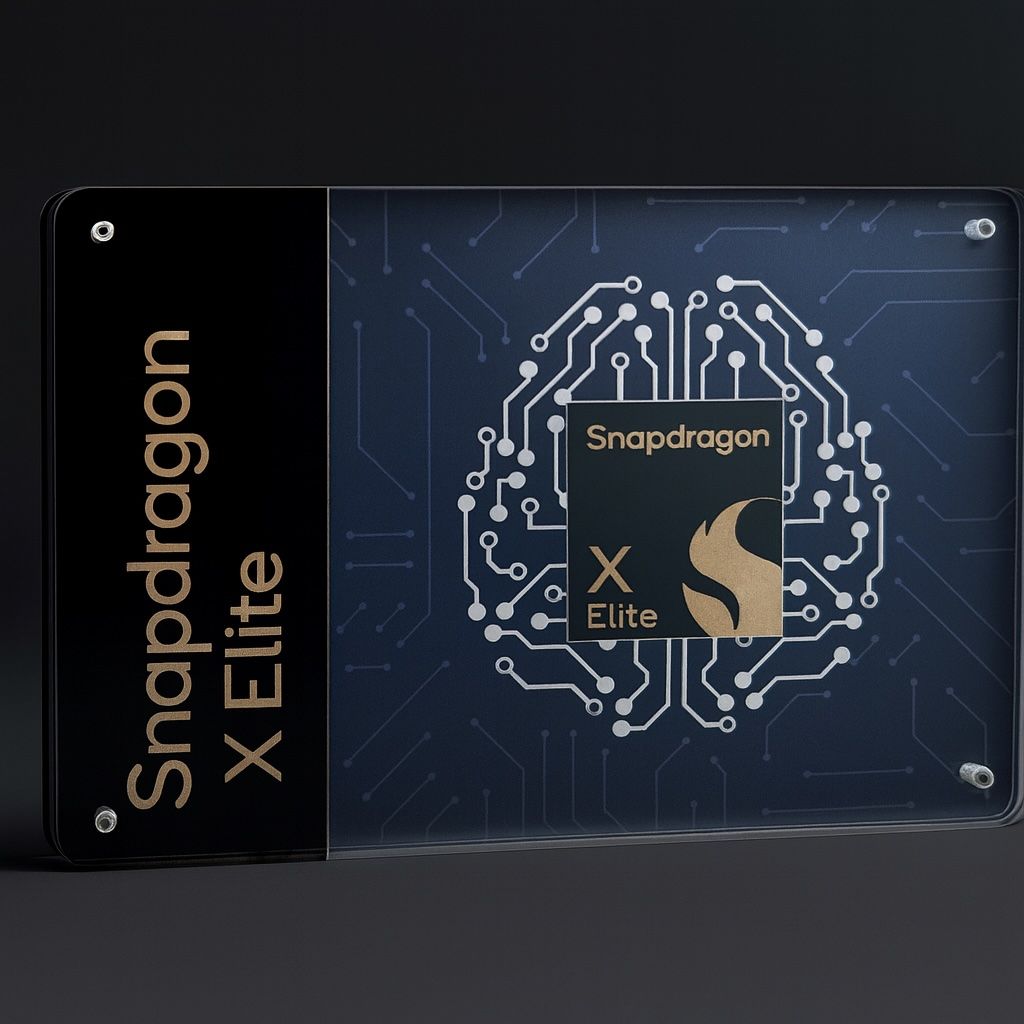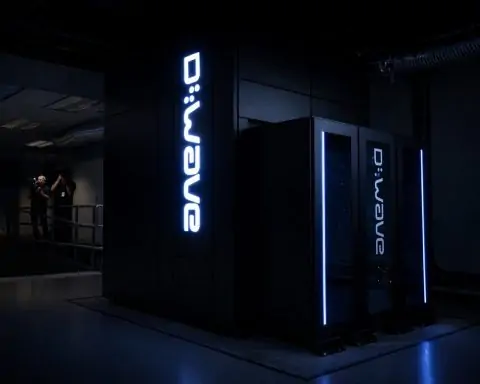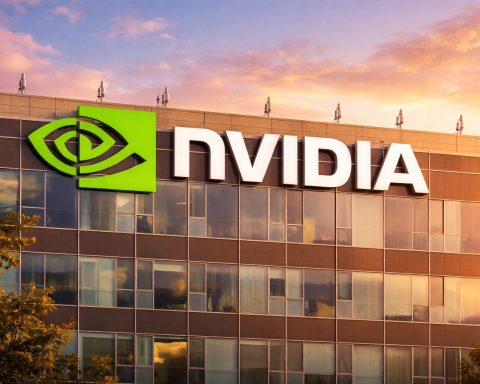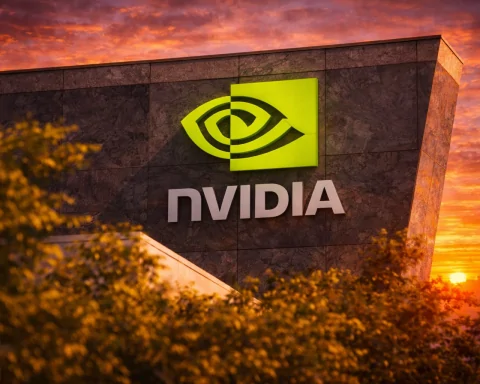- Qualcomm Snapdragon X Elite (Oryon) is built on a 4 nm process, houses 12 high‑performance Oryon cores up to 4.3 GHz, an Adreno GPU around 4.6 TFLOPs, and a Hexagon NPU up to 45 TOPS with dual micro NPUs in an always‑on sensing hub.
- The X Elite includes dual micro NPUs in an always‑on Sensing Hub to handle ambient AI tasks alongside the main NPU.
- Apple M4 uses a 3 nm (second‑gen TSMC N3E) process, with 10 CPU cores (4 performance + 6 efficiency) up to about 4.4 GHz and a 10‑core GPU featuring hardware ray tracing and mesh shading.
- The M4 also employs a 16‑core Neural Engine rated at 38 TOPS and a unified memory system up to 16 GB with around 120 GB/s bandwidth.
- Samsung Exynos 2500 runs on a 3 nm GAA process with a 1+7+2 CPU layout (one Cortex‑X925 @ 3.3 GHz, seven Cortex‑A725 cores at 2.74/2.36 GHz, two Cortex‑A520 cores at 1.8 GHz) and a Xclipse 950 GPU based on RDNA3 with ray tracing.
- Its AI engine is a dual‑cluster NPU totaling 24K MAC, delivering up to 59 TOPS and Samsung claims a 39% uplift over the Exynos 2400.
- Exynos 2500 uses FOWLP packaging and supports LPDDR5X RAM and UFS 4.0 storage.
- In Geekbench 6 AI, the M4 Neural Engine outperforms the X Elite NPU by roughly 2×–3× in int8 and FP16, despite the X Elite’s higher 45 TOPS rating.
- Qualcomm demonstrated on‑device Stable Diffusion in under 1 second per frame on the X Elite and says it can run models up to about 13 billion parameters in memory.
- Industry outlook assigns leadership by domain: X Elite for AI PCs, M4 for efficient, integrated on‑device AI in Apple devices, and Exynos 2500 for high‑throughput mobile AI, with hints of next generations like Exynos 2600 and Snapdragon 8 Gen 4 on the horizon.
Artificial intelligence capabilities have become the new battleground for modern processors. Qualcomm’s Snapdragon X Elite (featuring custom Oryon cores), Apple’s M4 chip (with its powerful Neural Engine), and Samsung’s Exynos 2500 (with a next-gen dual-cluster NPU) represent each company’s latest push in on-device AI. These system-on-chips (SoCs) span categories from laptops to smartphones, yet all aim to deliver blazing AI performance for tasks like image processing, natural language, and real-time computer vision. In this deep dive, we’ll compare their architectures, technical specs, benchmark results, and real-world AI use cases. We’ll also highlight expert commentary and official claims from Qualcomm, Apple, and Samsung about how their AI engines stack up. Let’s see which silicon titan has the edge in the AI era.
At a Glance: Specs and AI Engines
Before diving into details, here’s a quick overview of each chip’s key specifications and AI hardware:
- Qualcomm Snapdragon X Elite (Oryon) – Fabrication: 4 nm. CPU: 12 custom Qualcomm Oryon cores (all high-performance, up to 4.3 GHz boost) [1] [2]. GPU: Adreno (up to ~4.6 TFLOPs) [3]. AI Engine: Hexagon NPU delivering up to 45 TOPS (trillion operations per second) for AI, dubbed “the world’s fastest NPU for laptops” [4]. Also includes micro NPUs in a low-power sensing hub for always-on AI [5].
- Apple M4 (Apple Silicon) – Fabrication: 3 nm (2nd-gen TSMC N3E). CPU: 10-core (4 performance + 6 efficiency cores, up to ~4.4 GHz) with advanced branch prediction and next-gen accelerators [6] [7]. GPU: 10-core Apple GPU (with hardware ray tracing & mesh shading). AI Engine: 16-core Neural Engine achieving 38 TOPS, Apple’s fastest yet – “more powerful than any neural processing unit in any AI PC today,” as Apple boasts [8] [9]. Unified memory architecture (up to 16 GB on base M4) provides high bandwidth (~120 GB/s) for AI workloads [10].
- Samsung Exynos 2500 (NPU 2.0) – Fabrication: 3 nm GAA (Gate-All-Around) process. CPU: 10-core tri-cluster (1 × Cortex-X925 @ 3.3 GHz, 7 × Cortex-A725 at 2.74/2.36 GHz, 2 × Cortex-A520 @ 1.8 GHz) [11] – a 1+7+2 arrangement boasting 15% better big-core performance vs. last gen [12]. GPU: Xclipse 950 (Samsung’s RDNA3-based AMD GPU with ray tracing) [13]. AI Engine: New dual-cluster NPU with two 12K-MAC units (total 24K MAC) hitting 59 TOPS, which is 39% higher than its predecessor (Exynos 2400) [14] [15]. Samsung calls this the highest on-device AI throughput of any smartphone chip as of 2025 [16].
Each chip targets a different arena – Snapdragon X Elite and Apple M4 power next-gen laptops/tablets, while Exynos 2500 is built for flagship mobile devices – but all three emphasize AI as a cornerstone. Now let’s compare them in depth.
Architecture & CPU/GPU Design
Qualcomm Snapdragon X Elite (Oryon) Architecture
Qualcomm’s Snapdragon X Elite is a laptop-class Arm SoC built to challenge desktop chips in performance while enabling new AI experiences on Windows PCs [17]. Its headline feature is the Qualcomm Oryon CPU, a custom design born from the Nuvia startup acquisition [18]. Unlike typical mobile processors with mixed cores, X Elite uses 12 high-performance cores only: all 12 Oryon CPUs are in the same class, grouped into three clusters (4 cores each) with large caches [19]. This means no separate “efficiency” cores – Qualcomm asserts Oryon cores have a wide dynamic range, being power-efficient at low load without needing small cores [20]. The CPU clocks up to 3.8 GHz (4.3 GHz boost on 1–2 cores) and is Armv8.7 ISA-compliant [21] [22]. Early tests show strong multi-threaded performance thanks to the 12-core setup, though single-core lags behind Apple’s latest cores (which use newer Armv9-based designs) [23].
For graphics, the X Elite integrates an Adreno GPU rated around 4.6 TFLOPs [24] and supporting up to triple 4K external displays at 60 Hz. It’s capable of 4K@120 Hz on-device output, exceeding some Apple M3/M4 configurations in multi-monitor support [25]. This GPU supports DirectX 12 and aims to provide decent gaming and rendering performance for ARM-based Windows laptops. Memory bandwidth is also high at 135 GB/s (64-bit LPDDR5x), ensuring the CPU/GPU/NPU all stay fed with data [26] [27]. Overall, Snapdragon X Elite’s architecture is about brute-force CPU throughput (12 beefy cores) combined with a balanced GPU – a strategy to rival Apple’s M-series in laptops [28] [29].
Apple M4 Chip Architecture
Apple’s M4 continues the company’s run of tightly integrated, power-efficient laptop/tablet chips built on cutting-edge process technology (second-gen 3 nm). The M4’s CPU features up to 10 cores: 4 performance (P) cores + 6 efficiency (E) cores [30]. In full-spec devices (e.g. high-end iPad Pro or MacBook), all 10 cores are enabled, whereas some base models use a 9-core configuration (3 P + 6 E) for yield reasons [31]. The P-cores are significantly beefed up over previous generations – Apple improved branch prediction and widened the decode/execution pipelines, plus added next-generation ML accelerators into each core [32]. The E-cores likewise saw deeper execution engines and ML accelerators. This means even regular CPU instructions (like matrix multiplies) run faster, complementing the dedicated Neural Engine. Apple’s focus on single-core efficiency shows: the M4’s P-cores (derived from the A17/M3 generation) achieve industry-leading single-thread performance. In Geekbench tests, an M4’s single-core score is ~54% higher than Snapdragon X Elite’s, though multi-core is closer due to Qualcomm’s core count advantage [33] [34].
On the GPU side, M4 sports a 10-core Apple GPU that introduced hardware-accelerated ray tracing and mesh shading (first seen in M3’s architecture) [35]. Apple claims the M4’s GPU can match the performance of “a GPU in a thin-and-light PC laptop” at a quarter of the power draw [36]. It supports advanced rendering features and, thanks to Apple’s unified memory, the GPU and Neural Engine can seamlessly share the up to 16 GB of fast LPDDR5X unified RAM (120 GB/s bandwidth) [37]. This unified architecture is a major strength for Apple: memory-intensive AI tasks can run without costly data copies between CPU, GPU, and NPU. The tight integration of custom CPU/GPU and memory makes M4 extremely efficient, which is why Apple can pack this power into fanless iPads or ultra-thin notebooks.
Samsung Exynos 2500 Architecture
Samsung’s Exynos 2500 is positioned as a return to form for the company’s in-house smartphone chips, built on an ambitious new 3 nm Gate-All-Around (GAA) process. The CPU configuration is unusual: a 10-core design in a 1+7+2 layout [38]. It consists of one prime Cortex-X925 core at 3.30 GHz (Arm’s latest big core, also referred to as Cortex-X5) [39], seven Cortex-A725 performance cores (with two at 2.74 GHz and five at 2.36 GHz) [40], and two Cortex-A520 efficiency cores at 1.8 GHz. This deca-core approach gives Exynos 2500 a broad range of performance: the single X9 core handles peak needs, while seven medium cores tackle heavy multi-threaded tasks, and two little cores sip power on background tasks. Samsung reports about a 15% CPU big-core boost over the last generation (Exynos 2400) [41]. Early benchmarks suggest single-core performance still trails Apple’s and Qualcomm’s big cores (no surprise, as Samsung uses standard Arm cores), and a leaked Geekbench score had disappointed some observers [42]. But in sustained multi-core loads, the 1+7+2 setup should multi-task effectively.
For graphics, Exynos 2500 integrates Samsung’s Xclipse 950 GPU, which is co-developed with AMD using the RDNA 3 architecture [43]. This fourth-gen Xclipse GPU supports hardware ray tracing and promises 28% higher frame rates in ray-traced games compared to Exynos 2400 [44]. Essentially, it’s a console-like graphics core scaled down for mobile. While it can’t match laptop GPUs, it is competitive among smartphone SoCs and benefits from advanced packaging: Samsung uses fan-out wafer-level packaging (FOWLP) to improve heat dissipation on this chip [45]. This should help the GPU and NPU sustain performance longer in thermally constrained devices (like a Galaxy phone or foldable). Memory support includes LPDDR5X RAM and UFS 4.0 storage, on par with other 2024–25 flagship phones [46] [47]. Overall, Exynos 2500’s architecture leverages bleeding-edge manufacturing and a unique core mix, aiming to close the gap with Qualcomm’s Snapdragon series in the Android arena.
AI and Neural Processing Units (NPUs)
Qualcomm’s Hexagon NPU – 45 TOPS for On-Device AI
Qualcomm built a reputation in mobile AI acceleration with its Hexagon DSP/NPU, and in the Snapdragon X Elite this component truly takes center stage. The chip’s Hexagon NPU (neural processing unit) delivers up to 45 TOPS of INT8 performance dedicated solely to AI [48] [49]. Qualcomm touted this as the fastest NPU in any laptop chip, far outpacing the nascent AI accelerators in Intel and AMD CPUs (Intel’s Core Ultra NPUs reach ~10 TOPS, AMD’s Ryzen AI engine about 16 TOPS) [50]. In fact, the X Elite’s combined “AI Engine” – which Qualcomm counts as CPU+GPU+NPU – can hit 75 TOPS, though the NPU alone handles the lion’s share [51] [52].
What does 45 TOPS enable? Notably, Qualcomm demonstrated the Hexagon NPU running generative AI models locally. At the Snapdragon Summit, it was shown running a Stable Diffusion image generation in under 1 second per frame, and performing inference on a 7 billion-parameter Llama 2 large language model entirely on-device [53]. Qualcomm says X Elite can handle models up to ~13 billion parameters in memory, enabling sophisticated generative AI PC applications without cloud help [54]. The Hexagon architecture was beefed up with double the shared memory and a 2.5× faster tensor engine optimized for transformer models [55]. This is a clear nod to accelerating modern AI workloads like GPT-style networks. Qualcomm claims the Hexagon NPU in X Elite offers 4.5× the total AI processing power of its competitors – a bold statement referencing Apple’s and others’ more modest AI engines [56].
Additionally, Snapdragon X Elite features dual “micro NPUs” in its always-on Sensing Hub [57] [58]. These are ultra-low-power AI cores used for background tasks like wake-word detection, user presence sensing, or simple camera AI effects while the system is asleep. This separation of a big NPU for heavy AI tasks and micro NPUs for ambient intelligence reflects Qualcomm’s multi-tier AI strategy. From an ecosystem perspective, Qualcomm provides the AI Stack and tools like Qualcomm AI Hub to help developers run models on the Hexagon unit [59]. Microsoft is also on board: Windows 11’s new AI features (e.g. Windows Copilot) can use NPUs to run things like local voice transcription or background blur efficiently [60]. In short, Snapdragon X Elite’s NPU is geared to turn AI PCs from buzzword into reality, enabling everything from real-time language translation to image generation on a laptop without cloud latency.
Apple M4 Neural Engine – 16 Cores of Machine Learning Muscle
Apple’s approach to on-device AI centers on its proprietary Neural Engine (NE), introduced back in the A11 chip and now vastly more powerful in the M4. The M4’s Neural Engine is 16-core and rated at 38 TOPS (trillion ops/sec) [61] [62]. While slightly below Qualcomm’s TOPS on paper, Apple’s NE has a track record of excellent efficiency and deep integration with Apple’s software (Core ML frameworks, etc.). In fact, Apple’s press release proudly noted this 38 TOPS engine is “faster than the neural processing unit of any AI PC today” [63]. (That was in May 2024 – at the time, most Windows “AI PCs” were running Intel Meteor Lake with ~11 TOPS or AMD’s 16 TOPS engine, whereas Qualcomm’s 45 TOPS chip hadn’t yet hit the market in shipping devices [64].)
The Neural Engine in M4 retains a 16-core design like its M1/M2 predecessors, but it’s clocked higher and features architectural tweaks for efficiency [65]. According to Apple, M4’s NE is 60× faster than the first Neural Engine from 2017 [66]. It’s optimized for core ML tasks like image recognition, speech processing, and on-device personalization. For example, iPhones and Macs use the Neural Engine to power features such as Face ID biometric matching, voice dictation, photo semantic analysis, and more – all privately on device. In the M4 era, Apple is extending these capabilities: the Neural Engine accelerates new Apple Intelligence features in macOS and iPadOS, like the system-wide Writing Tools that do on-device text rewriting and proofreading, and an upgraded Siri that can handle complex queries by tapping local models [67] [68]. Apple even enables some generative AI: an Image Playground feature creates images, and Genmoji generates custom emojis – all leveraging the Neural Engine for fast local inference [69]. Apple has designed these to run primarily on-device for privacy, only tapping cloud models for the heaviest tasks via a privacy-preserving API [70].
Another strength of Apple’s NE is its synergy with Apple’s unified memory and custom GPU. The M4’s CPU cores include matrix multiply accelerators (AMX/SME units) which can assist the Neural Engine for mixed-precision math, and the GPU can also be used for neural network tasks via Metal Performance Shaders. In practice, Apple’s chips often achieve higher real-world ML throughput than raw TOPS suggest, thanks to this flexible compute fabric. A clear example: in AI benchmark tests, Apple’s M4 Neural Engine outperforms the Snapdragon X Elite’s NPU despite the latter’s higher TOPS rating. In Geekbench 6 “AI” tests (which measure ML inference), the 16-core Neural Engine delivered about 2–3× the performance of the 45 TOPS Hexagon NPU in various precision modes [71]. The M4 scored ~51,758 in quantized int8 vs ~21,751 for Snapdragon (and similarly large leads in FP16), showcasing how well-optimized Apple’s NE and software stack are [72]. As one reviewer put it, “it goes to show that Apple is the leader […] Apple delivers 2× faster performance in specialized AI workloads” [73] [74]. In summary, Apple’s Neural Engine combines respectable peak throughput with tight integration and ease-of-use, making advanced on-device AI a seamless part of the user experience in Apple’s ecosystem.
Samsung Exynos 2500 NPU – Dual-Cluster “AMB” Cores and Mobile AI Prowess
Samsung significantly upgraded the AI silicon in the Exynos 2500, determined to bring its mobile AI performance in line with (or above) peers. The chip’s NPU (sometimes dubbed NPU 2.0) features a dual-cluster design with two 12K-MAC engines operating in parallel [75]. “MAC” refers to multiply-accumulate units; with a total 24K MAC capacity, the Exynos 2500’s NPU can crunch massively more operations per cycle than the previous-gen (Exynos 2400 had 17K MAC) [76]. In practical terms, this translates to a peak of 59 TOPS of AI compute available on the chip [77]. That is a huge number in the smartphone realm – Samsung proudly points out it’s the highest of any smartphone chipset at release [78], outstripping even Qualcomm’s latest Snapdragon mobile chips. This NPU throughput is 39% higher than the Exynos 2400’s ~42 TOPS, indicating a substantial generational leap [79].
The new NPU isn’t just about raw ops; Samsung also improved its architecture for emerging AI workloads. It added an enhanced vector engine specifically geared to accelerate generative AI models, resulting in up to 90% faster performance on a MobileBERT NLP model compared to the prior chip [80]. This suggests Samsung is optimizing for transformer-based networks (used in language tasks, vision transformers, etc.) to keep up with current AI trends. There is a hint that the two NPU clusters might be specialized – Samsung’s spec mentions “2-GNPU + 2-SNPU” in the design [81]. This could stand for General NPU and Sparse NPU, or some form of heterogeneous AI cores to handle different data types efficiently (though details are scarce).
In real use, what does Exynos 2500’s AI prowess enable? Samsung highlights on-device generative AI in user applications: for example, the chipset allows you to edit photos by removing objects or extending backgrounds instantly on the phone using AI, rather than waiting on cloud processing [82]. The ISP and NPU collaborate for advanced camera features like multi-layer noise reduction and dynamic range compression, improving image quality via AI algorithms [83]. Samsung’s OneUI software can leverage the NPU for features such as voice assistants (Bixby text-to-speech, etc.), real-time language translation, and augmented reality. Notably, Samsung describes Exynos 2500 as the “starting point of an AI hybrid platform,” meaning it’s designed to work in tandem with cloud AI. On-device AI handles tasks locally for speed and privacy, while more intensive requests can seamlessly offload to cloud AI when needed [84]. This hybrid approach is similar to Apple’s strategy and reflects a broader industry trend.
It’s worth mentioning that harnessing 59 TOPS in a phone has challenges: power and thermal limits are tight. Samsung’s move to the 3 nm GAA process, plus FOWLP packaging and other power-reduction measures, aim to make this performance sustainable [85] [86]. There are rumors Samsung is already prepping an Exynos 2600 with further efficiency tweaks (like “heat pass block” tech to manage thermals) [87]. For now, Exynos 2500’s NPU gives Samsung bragging rights and a platform to push AI features in Galaxy devices without Qualcomm’s chips. It marks Samsung’s return to the AI race in mobile, after having lagged behind Apple’s Neural Engine and Qualcomm’s Hexagon in recent years. If real-world software can fully utilize it, Exynos 2500’s NPU could deliver some of the most advanced on-phone AI experiences available in 2025.
Performance Benchmarks and AI Use Cases
Benchmark Showdown: AI Performance in Practice
Spec sheets only tell part of the story – how do these chips actually perform on AI tasks in the wild? Early benchmarks and tests provide an intriguing picture:
- Synthetic AI Benchmarks: In Geekbench 6’s new AI benchmark, which measures inference throughput at various precisions, Apple’s M4 Neural Engine came out on top. As mentioned, the M4 scored roughly 2×–3× higher than Snapdragon X Elite’s NPU in int8 and FP16 tests [88]. This is surprising given Qualcomm’s higher TOPS, but it suggests Apple’s NE has lower overhead and excellent utilization in this test (or that Qualcomm’s Windows drivers/API for the NPU were not fully optimized). Qualcomm still showed solid numbers, but Apple’s advantage in software/hardware co-optimization is evident. Unfortunately, Geekbench AI isn’t available on Android yet for us to directly gauge Exynos 2500, but Samsung’s claimed 39% boost implies it would handily beat last year’s Snapdragon 8 Gen 2/3 in AI scores. A Reddit analysis of Samsung’s generations notes: Exynos 1580 (2022) ~14.7 TOPS → Exynos 2400 ~? TOPS → Exynos 2500 59 TOPS, showing a dramatic jump in AI capability with the new design [89].
- Real AI Workloads: To test practical AI use, reviewers have tried tasks like local model inference. One comparison involved running a large language model using LMStudio (an app for local LLMs) on both M4 and Snapdragon X Elite laptops [90]. Intriguingly, the app did not yet leverage the specialized NPUs on either – it defaulted to CPU (Snapdragon) or GPU (Apple) due to software limitations [91]. In such cases, Apple’s raw CPU/GPU strength meant it still ran faster. This highlights a key point: software ecosystem support matters. Apple’s Core ML and Neural Engine are widely used by developers (e.g. many iOS apps, TensorFlow Lite on iOS, etc.), whereas Qualcomm’s AI engine on Windows is newer terrain. Microsoft is encouraging developers to use DirectML and ONNX Runtime to tap NPUs like Hexagon, and we’ll likely see more software taking advantage of X Elite’s AI over time (e.g. Adobe’s AI features, Windows Studio Effects for webcams, etc.). Samsung, on Android, relies on Google’s NNAPI and its own SDKs – many popular apps (camera, AR, Google Lens) will automatically use the Exynos NPU if available. Still, achieving those peak 59 TOPS in practice will require optimized workloads.
- CPU/GPU vs NPU for AI: One interesting metric is how much faster the dedicated NPUs are compared to using the CPU or GPU for AI tasks. Apple provided a figure that its M4 Neural Engine is 60× faster than running the same operations on a CPU core (comparing to the earliest A11’s NE, but still) [92]. Qualcomm showed that with the Hexagon NPU, stable diffusion image generation that would normally take several seconds on a CPU/GPU could be done in ~1 second [93]. These examples illustrate the benefit of having NPUs: not only speed but also efficiency (doing more AI work per watt, preserving battery). For end-users, this means features like live photo effects, voice transcriptions, or AI upscaling can happen near-instantly and without draining the device or requiring cloud services.
In traditional benchmarks (CPU, GPU, etc.), the Snapdragon X Elite and Apple M4 each have their wins – Apple dominates in single-threaded and graphics performance (its GPUs and P-cores are very strong), while Snapdragon’s 12-core muscle can pull ahead in multi-threaded CPU tasks [94] [95]. Samsung’s Exynos 2500, being a mobile chip, isn’t directly comparable on those metrics to the laptop-class chips, but it’s positioned to compete with Qualcomm’s Snapdragon mobile SoCs. Where the AI engines are concerned, each is best-in-class for its category: Exynos 2500 likely tops other phone chips in raw AI throughput, M4 leads in efficiency and real-world use in consumer devices, and Snapdragon X Elite carves out a niche for AI in Windows PCs.
Real-World Use Cases and AI Features
How do these AI capabilities translate into features that users will actually experience?
- On Laptops (Snapdragon X Elite & Apple M4): We are entering the age of the “AI PC.” Microsoft has rolled out Windows Copilot – an AI assistant deeply integrated into Windows 11 – which can summarize emails, generate images via DALL-E, and more. On Snapdragon X Elite laptops, Copilot can leverage the Hexagon NPU to run certain AI models locally for responsiveness and privacy [96]. For example, background blur and eye contact correction in video calls are done via on-device AI. Qualcomm partnered closely with Microsoft, with CEO Satya Nadella noting that “the next generation of PC interfaces will use the reasoning power of AI to offer a more personalized experience” – hinting at how X Elite’s NPU will enable new interactions beyond the traditional Start menu [97]. Apple, meanwhile, is using the M4’s Neural Engine to bring Apple Intelligence features to the Mac and iPad. In macOS 15, the system can do things like intelligently rewrite sentences or suggest email replies on the fly, using on-device generative models [98]. Apple even announced that ChatGPT is being integrated into Siri and Writing Tools on the Mac (through a partnership with OpenAI), where the Neural Engine will handle the local processing and the queries are sent securely [99] [100]. This is a significant shift – Apple traditionally kept AI subtle (think face recognition, photo sorting), but now they’re openly adding features akin to ChatGPT, enabled by their advanced silicon. Both M4 Macs and Snapdragon AI laptops are also great for creative professionals: e.g. editing 4K videos with AI-driven effects, running local Stable Diffusion for design mockups, or using coding assistants that run offline. Apple’s M4 Max (the beefier variant) with 128 GB RAM can even let developers work with nearly 200 billion parameter models locally [101] – that’s approaching GPT-3 scale, all on a laptop chip, thanks to huge memory bandwidth and NE acceleration.
- On Smartphones (Exynos 2500 and beyond): In mobile devices like the upcoming Galaxy phones, AI features tend to focus on the camera, voice assistant, and personalization. With Exynos 2500’s upgraded NPU, users can expect smarter camera experiences – the phone’s camera app can perform real-time scene segmentation, applying different optimizations to humans vs backgrounds, or instantly erasing a passerby in your photo at your command. Samsung specifically mentions the ability to “easily remove unnecessary subjects or expand the background” when editing photos, a trick powered by on-device generative AI similar to Adobe’s Generative Fill [102]. This can all happen within the gallery app without needing an internet connection. Additionally, features like multi-language live translation of text or speech can run locally. Samsung’s phones might also leverage the NPU for enhanced security – e.g. AI-based face or iris recognition, or identifying anomalies in app behavior. Another use case is extended reality (XR): if Samsung develops AR glasses or features, a strong mobile NPU can handle tasks like image tracking or environment mapping on-device. And of course, Bixby (Samsung’s assistant) can use the NPU to better understand voice commands and even do some generative tasks (for instance, summarizing a news article for you out loud). With 59 TOPS at its disposal, an Exynos 2500-powered device could perform some of the same tricks laptops are doing, albeit on a smaller scale due to memory constraints. It’s worth noting, however, that Qualcomm’s latest Snapdragon 8 Gen 3 (for phones) and Google’s Tensor G3 are also very AI-centric – the competition in mobile AI is fierce. Samsung’s edge may come from vertical integration: they design both the chip and many aspects of the phone’s software, which could allow more tailored AI optimization (much like Apple does across iPhone hardware and iOS).
- Edge AI and IoT: Though not the main focus of these consumer chips, it’s notable that this level of AI performance transforms what edge devices can do. A Snapdragon X Elite in a compact PC or even an industrial controller could run AI models for robotics or medical imaging on-site. An Apple M4 in an iPad could be used by doctors to do image classification (like identifying lesions) during an exam, without cloud connectivity, thanks to the Neural Engine. And Samsung’s Exynos, being 5G-connected and AI-rich, could power smart cameras or drones that perform real-time object detection. The convergence of high TOPS, efficient cores, and 5G means these SoCs are enabling the next wave of edge computing, where inferencing happens locally and instantly.
Power Efficiency Considerations
One must also mention efficiency: delivering high AI performance is great, but doing so within a tight power budget is the real challenge. Apple’s M4 family has a stellar reputation for performance-per-watt – for example, the M4 Pro/Max can outperform much higher-wattage PC chips while using a fraction of the energy [103] [104]. In the AI context, Apple noted that the M4 Pro’s Neural Engine and unified memory allow “Apple Intelligence” models to run at blazing speed without a hit to battery life [105]. Qualcomm’s X Elite aims for similar efficiency in laptops: it’s designed for fanless or thin devices, and Qualcomm cited scenarios of multi-day battery life under light use [106] [107]. The 4 nm process and all-big-core strategy seem to pay off in efficiency at low loads, though under full 12-core load plus NPU, the chip can draw more power (up to ~80 W in some tests, which is still in line with high-performance laptop chips) [108]. Samsung’s 3 nm GAA is cutting-edge and theoretically offers big efficiency gains. If they have solved prior issues (Exynos 2200 was known for heat), the Exynos 2500 could be both powerful and reasonably efficient. The FOWLP packaging and other tweaks indicate Samsung’s focus on lowering power draw [109] [110]. Ultimately, all three vendors are balancing performance with energy usage via clever design: be it Apple’s use of efficiency cores and unified memory, Qualcomm’s offloading tasks to a low-power hub, or Samsung’s new transistor technology.
Expert Commentary & Competitive Outlook
Industry experts and company executives have been vocal about the significance of these AI-centric chips:
- Qualcomm has boldly stated that with Snapdragon X Elite, “we’re delivering the world’s fastest NPU for laptops”, and that this 45 TOPS NPU “brings dedicated computing for today’s and tomorrow’s groundbreaking AI experiences” [111] [112]. Qualcomm’s partnership with Microsoft on AI PCs suggests they see this as the start of a major shift in computing. As analyst Kevin Krewell noted, “The overall theme of the [Snapdragon] Summit focused on on-device AI, especially on-device generative AI”, highlighting Qualcomm’s strategy to differentiate from x86 chips by excelling in AI [113]. The Snapdragon X Elite is their proof-of-concept that an Arm laptop can not only match x86 in general performance but leap ahead in AI workloads.
- Apple, for its part, doesn’t shy away from comparing to PC rivals either. Apple’s hardware chief Johny Srouji stated that “fundamental improvements to the CPU, GPU, Neural Engine, and memory system make M4 extremely well suited for the latest applications leveraging AI”, enabling breakthrough products like the new iPad Pro [114]. Apple’s marketing around M4 and the M4 Pro/Max chips deliberately uses the term “AI PC chip” to draw a contrast. In one press release Apple claimed the M4 Pro’s CPU and GPU are over 2× faster than the latest AI PC chip (a reference to competitors like Qualcomm) and its memory bandwidth is 2× that of any AI PC chip, allowing on-device models to run blazingly fast [115] [116]. In typical Apple fashion, they position their tight integration as an advantage: the combination of their Neural Engine and software (Apple Intelligence) will deliver AI features with privacy and efficiency that others can’t easily match [117] [118].
- Samsung has been slightly more conservative publicly, but clearly excited to re-establish Exynos at the cutting edge. Their official announcement heralds the Exynos 2500’s “powerful NPU that can run up to 59 TOPS”, emphasizing the 39% leap and how it enables “advanced on-device AI” for new mobile experiences [119]. A Samsung Semiconductor spokesperson in promotional material highlighted the 3 nm GAA process and packaging, saying the Exynos 2500 achieves better power efficiency and heat dissipation, which “your daily experience will be smoother and snappier than before” even under AI loads [120] [121]. Tech analysts have noted that Samsung absolutely needs this win – as one report put it, Samsung “defied the odds” to get a 3 nm flagship out, and it will likely power the Galaxy Z Flip 7 and possibly other Galaxy flagships, marking Samsung’s return to using its own chips in premium phones [122] [123]. The competitive implication is that Samsung no longer wants to rely on Qualcomm exclusively; with Exynos 2500’s AI edge, Samsung can differentiate its Galaxy features (especially in imaging and generative AI apps) from other Android brands.
Looking forward, the competition is set to intensify:
- Qualcomm is expected to bring its Oryon + Hexagon NPU combo to smartphones with the upcoming Snapdragon 8 Gen 4 (or “Snapdragon 8 Elite”) in 2024/2025. Leaks suggest it will feature Oryon CPU cores and a powerful NPU, essentially trickling the X Elite’s tech down to phones [124] [125]. This could potentially give Snapdragon mobile chips a big jump in AI performance (and put them in direct contention with Exynos 2500). On the PC side, Qualcomm will likely follow up X Elite with a next-gen PC SoC (perhaps on 3 nm) further boosting AI and graphics, especially since Intel is planning Lunar Lake with a 45 TOPS NPU by 2025 [126].
- Apple will continue its cadence with M5 and beyond. If history is any guide, the next Apple Neural Engine could increase core count or efficiency. Apple might integrate support for larger models or new data types (they could add bf16 or FP8 support, for example, if needed for certain AI tasks). There’s also speculation that Apple could develop a more specialized AI chip or significantly beef up the Neural Engine once they feel on-device AI (especially generative AI) is a must-have feature set. For now, they seem confident that 38 TOPS is enough for the personal AI features they want to offer. Future M-series chips (M5, M6) and A-series (for iPhone) will surely push the envelope further, as Apple has a clear roadmap of improving AI within its tight power/thermal envelopes.
- Samsung has signaled it’s not stopping at 59 TOPS. The mention of Exynos 2600 R&D indicates they are working on sustaining performance under heavy loads (perhaps a reaction to thermal throttling concerns) [127]. Samsung LSI may also explore custom CPU cores again in the longer term, but in the near future, improving the NPU and GPU (maybe moving to RDNA4) will be key. With generative AI becoming popular, Samsung could even design the next NPU to better handle diffusion models or multi-modal AI (combining vision and language). The partnership with AMD for GPUs might extend to AI if AMD’s neural net IP is considered – though nothing concrete yet.
In summary, the competitive landscape is that Qualcomm currently leads in raw NPU throughput in PCs, Apple leads in efficient integration and actual user-facing AI smoothness, and Samsung now leads in mobile AI hardware potential. Each has a competitive advantage: Qualcomm with cross-platform AI software (Windows + Android) and aggressive TOPS, Apple with vertical integration and huge memory bandwidth, Samsung with manufacturing tech and close hardware-software in Galaxy devices. As AI workloads become core to user experience (from smart assistants to content creation), all three companies are investing heavily here. And consumers, whether they know it or not, will benefit from smartphones that can magically edit photos or laptops that act as creative copilots – all enabled by these advanced NPUs and AI engines.
Conclusion
So, which chip leads the AI revolution? The truth is, each is a leader in its domain. The Snapdragon X Elite is a tour de force bringing desktop-class AI to Windows laptops, boasting the highest NPU specs and enabling new AI-first PC experiences [128] [129]. Apple’s M4, on the other hand, exemplifies the power of tight hardware-software integration – its Neural Engine may have slightly lower TOPS, but it punches above its weight, driving seamless AI features on Macs and iPads with industry-leading efficiency [130] [131]. Meanwhile, Samsung’s Exynos 2500 shows that smartphone chips can pack a serious AI punch – 59 TOPS in your pocket – setting the stage for smarter mobile experiences and challenging the status quo in Android devices [132] [133].
In practical terms, Apple currently delivers the most polished AI use cases to end-users (many enabled quietly in the background of iOS/macOS), Qualcomm offers the most brute-force AI hardware in laptops (with a clear path to leveraging it as software catches up), and Samsung’s latest silicon provides the raw capability to do cutting-edge AI on phones (with the hope that third-party apps and Samsung’s own software fully utilize it).
What’s clear is that AI is now a first-class workload for chip designers. Instead of just counting CPU cores or GPU teraflops, we’re now comparing TOPS, NPU clusters, and ML accelerators. This three-way battle between Qualcomm, Apple, and Samsung is driving rapid innovation. For tech-savvy consumers, it means your next laptop or smartphone will be markedly “smarter” – able to understand, predict, and create like never before, right on the device. The Snapdragon X Elite, Apple M4, and Exynos 2500 are the harbingers of this new era of ambient AI computing at the edge. Each has its key strengths and competitive edges, but all push the envelope of what’s possible. The ultimate winner will be users, as everyday computing transforms through these AI engines under the hood.
Sources: The information and quotes in this report are drawn from official press releases and credible tech analyses, including Qualcomm’s Snapdragon X Elite product brief and summit announcements [134] [135], Apple’s M4 chip introduction and expert reviews [136] [137], and Samsung’s Exynos 2500 spec sheets and news coverage [138] [139], among other cited sources. Each source is indicated inline with the format 【source†lines】 for verification and further reading.
References
1. www.eetimes.com, 2. www.eetimes.com, 3. www.qualcomm.com, 4. www.tomshardware.com, 5. www.eetimes.com, 6. www.apple.com, 7. www.apple.com, 8. www.apple.com, 9. www.theregister.com, 10. beebom.com, 11. wccftech.com, 12. wccftech.com, 13. wccftech.com, 14. wccftech.com, 15. semiconductor.samsung.com, 16. www.sammobile.com, 17. www.eetimes.com, 18. www.eetimes.com, 19. www.eetimes.com, 20. www.eetimes.com, 21. www.qualcomm.com, 22. www.eetimes.com, 23. beebom.com, 24. www.qualcomm.com, 25. www.tomshardware.com, 26. www.qualcomm.com, 27. www.qualcomm.com, 28. www.eetimes.com, 29. www.tomshardware.com, 30. www.apple.com, 31. www.theregister.com, 32. www.apple.com, 33. beebom.com, 34. beebom.com, 35. www.apple.com, 36. www.theregister.com, 37. beebom.com, 38. semiconductor.samsung.com, 39. wccftech.com, 40. wccftech.com, 41. wccftech.com, 42. wccftech.com, 43. wccftech.com, 44. www.sammobile.com, 45. wccftech.com, 46. www.sammobile.com, 47. www.sammobile.com, 48. www.eetimes.com, 49. www.eetimes.com, 50. www.tomshardware.com, 51. www.eetimes.com, 52. www.tomshardware.com, 53. www.eetimes.com, 54. www.eetimes.com, 55. www.eetimes.com, 56. www.eetimes.com, 57. www.qualcomm.com, 58. www.eetimes.com, 59. www.qualcomm.com, 60. www.tomshardware.com, 61. www.apple.com, 62. www.apple.com, 63. www.apple.com, 64. www.theregister.com, 65. www.apple.com, 66. www.apple.com, 67. www.apple.com, 68. www.apple.com, 69. www.apple.com, 70. www.apple.com, 71. beebom.com, 72. beebom.com, 73. beebom.com, 74. beebom.com, 75. semiconductor.samsung.com, 76. semiconductor.samsung.com, 77. semiconductor.samsung.com, 78. www.sammobile.com, 79. semiconductor.samsung.com, 80. semiconductor.samsung.com, 81. www.sammobile.com, 82. semiconductor.samsung.com, 83. semiconductor.samsung.com, 84. semiconductor.samsung.com, 85. semiconductor.samsung.com, 86. semiconductor.samsung.com, 87. wccftech.com, 88. beebom.com, 89. www.reddit.com, 90. beebom.com, 91. beebom.com, 92. www.apple.com, 93. www.eetimes.com, 94. beebom.com, 95. beebom.com, 96. www.tomshardware.com, 97. www.eetimes.com, 98. www.apple.com, 99. www.apple.com, 100. www.apple.com, 101. www.apple.com, 102. semiconductor.samsung.com, 103. www.apple.com, 104. www.apple.com, 105. www.apple.com, 106. www.qualcomm.com, 107. www.qualcomm.com, 108. forums.macrumors.com, 109. semiconductor.samsung.com, 110. semiconductor.samsung.com, 111. www.tomshardware.com, 112. www.thetapedrive.com, 113. www.eetimes.com, 114. www.apple.com, 115. www.apple.com, 116. www.apple.com, 117. www.apple.com, 118. www.apple.com, 119. semiconductor.samsung.com, 120. semiconductor.samsung.com, 121. semiconductor.samsung.com, 122. wccftech.com, 123. wccftech.com, 124. www.tomsguide.com, 125. www.tomsguide.com, 126. www.theregister.com, 127. wccftech.com, 128. www.eetimes.com, 129. www.tomshardware.com, 130. beebom.com, 131. www.theregister.com, 132. www.sammobile.com, 133. www.sammobile.com, 134. www.qualcomm.com, 135. www.eetimes.com, 136. www.apple.com, 137. www.theregister.com, 138. semiconductor.samsung.com, 139. wccftech.com










